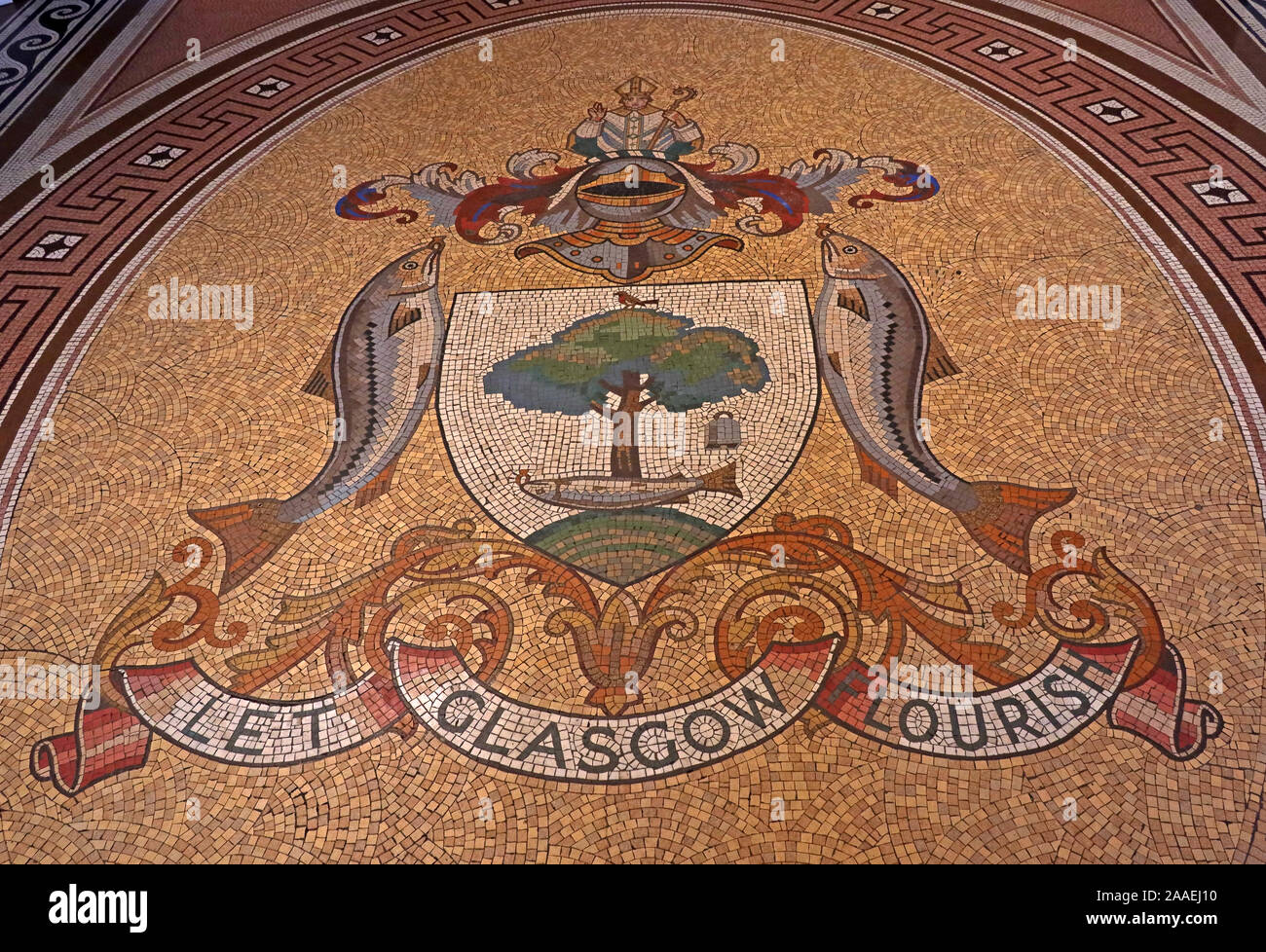Let Glasgow Flourish Mosaic, The Glasgow coat of arms: bird, tree, bell and fish, from City Chambers, George Square, Scotland, UK, G2 1DU

Image details
Contributor:
Tony Smith / Alamy Stock PhotoImage ID:
2AAEJ10File size:
55.7 MB (3.9 MB Compressed download)Releases:
Model - no | Property - noDo I need a release?Dimensions:
5340 x 3648 px | 45.2 x 30.9 cm | 17.8 x 12.2 inches | 300dpiDate taken:
18 November 2019Location:
82 George Square, Glasgow, Scotland,UK, G2 1DUMore information:
The City Chambers or Municipal Buildings in Glasgow, Scotland, has functioned as the headquarters of Glasgow City Council since 1996, and of preceding forms of municipal government in the city since 1889, located on the eastern side of the city's George Square. An eminent example of Victorian civic architecture, the building was constructed between 1882 and 1888 to a competition winning design by Scottish architect William Young. a native of Paisley. The entrance hall of the Chambers displays a mosaic of the city's coat of arms on the floor. The arms reflect legends about Glasgow's patron saint, Saint Mungo, and include four emblems – the bird, tree, bell, and fish – as remembered in the following verse: Here's the Bird that never flew Here's the Tree that never grew Here's the Bell that never rang Here's the Fish that never swam Inaugurated in August 1888 by Queen Victoria, the first council meeting was held within the chambers in October 1889. The building originally had an area of 5, 016 m2 (53, 990 sq ft). In 1923, an extension to the east side of the building in John Street was opened and in 1984 Exchange House in George Street was completed, increasing the size of the City Chambers complex to some 14, 000 m2 Need for a new city chambers had been apparent since the 18th century, with the old Tolbooth at Glasgow Cross becoming insufficient for the purposes of civic government in a growing town with greater political responsibilities. In 1814, the Tolbooth was sold – with the exception of the steeple, which still remains – and the council chambers moved to Jail Square in the Saltmarket, near Glasgow Green.